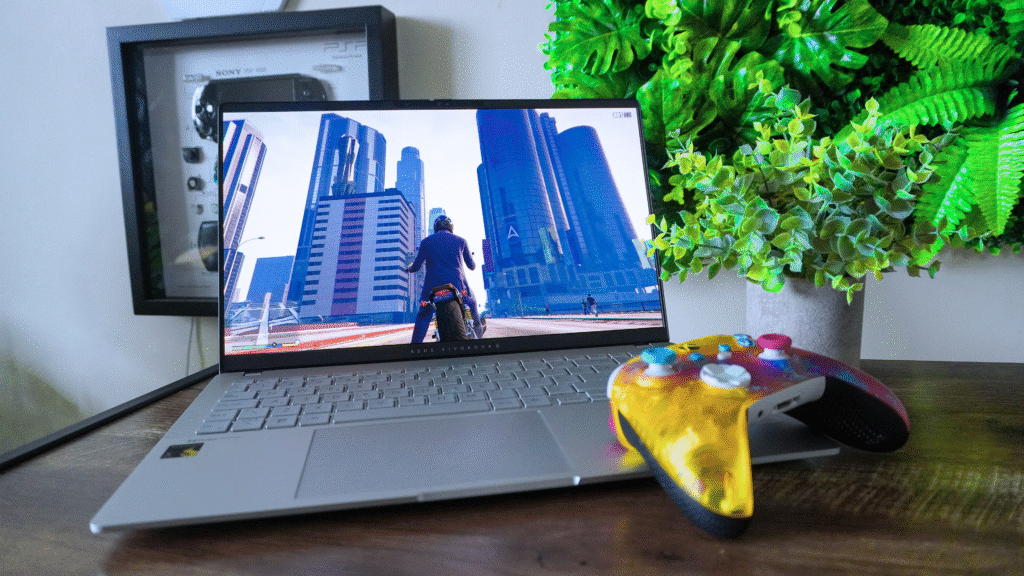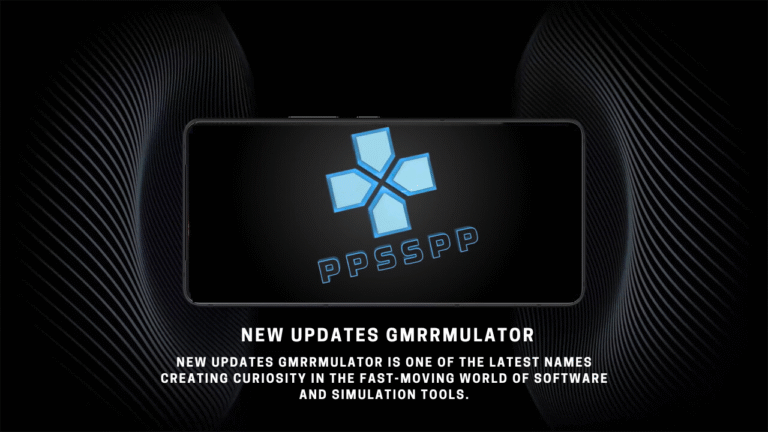New updates gmrrmulator is one of the latest names creating curiosity in the fast-moving world of software and simulation tools. It has started to gain quiet attention across scattered corners of the internet, where people are discussing its possible features and uses. Although information about it is still limited, the term itself suggests an emulator or simulator receiving an important new version or technical overhaul. But what exactly is it, and why has it begun appearing in online searches and social conversations? This article explores what we currently know, what the technology might represent, the potential advantages it could bring, and the open questions surrounding its authenticity and purpose.
Introduction to New Updates GMRRmulator
The phrase New updates gmrrmulator seems to blend two familiar ideas: the abbreviation New updates gmrrmulator, often seen in gaming or blockchain contexts, and the suffix -mulator, which commonly refers to emulation or simulation. Emulators replicate one system’s behavior within another, allowing a computer to mimic the operations of a game console, a mobile device, or even a complete operating system. That makes them useful for developers, students, and enthusiasts who need to test, analyze, or simply experience systems that they do not physically possess. Therefore, the name GMRRmulator likely points to a program designed to reproduce the functions of a specific platform known as “GMR,” whatever that may represent.
Across a few online references, New Updates GMRRmulator is described as a “powerful simulation tool” that has recently undergone major improvements. However, none of those mentions come from official developer pages or verified technology sources. No GitHub repository, open documentation, or software binary with that name has yet been confirmed. This lack of evidence makes it difficult to separate fact from speculation, but the recurring phrase new updates implies that earlier versions might have existed, or at least been planned.
What GMRRmulator Might Actually Be
If the project exists, its goal would probably be to emulate a virtual environment connected to GMR’s ecosystem—possibly a gaming or blockchain platform. For example, it might allow users to run digital modules, games, or smart applications built around GMR technology without requiring dedicated hardware. Such emulators often appear first as internal developer tools and are later released publicly after testing.
Another interpretation is that GMRRmulator could serve as a multi-system simulation environment, giving programmers and engineers the ability to create controlled experiments in networking, artificial intelligence, or virtual device behavior. The combination of “R” and “mulator” in its name may hint at an experimental or research-oriented design rather than a purely entertainment-based one. Until official documentation surfaces, these remain educated guesses—but they align with how emulator software typically evolves.
Understanding the “New Updates” Concept
The phrase New Updates attached to GMRRmulator has led many to believe that this is not an entirely new program but rather a major update to an existing platform. Emulation software usually improves incrementally, with updates focusing on better compatibility, higher performance, and reduced bugs. A newly updated GMRRmulator could therefore include faster processing speeds, reduced latency, enhanced graphics rendering, and expanded compatibility with additional file types or operating systems.
Developers often refine emulators to mimic real hardware more accurately. This could mean better synchronization with system clocks, improved controller input support, and smoother graphical output. In modern environments, updates may also include enhanced virtualization technologies, cloud synchronization, and integration with artificial intelligence systems that automatically optimize performance. If the “new updates” truly exist, these are the kinds of changes one would expect from a serious engineering effort behind GMRRmulator.
| Feature | Details |
|---|---|
| Keyword | new updates gmrrmulator |
| Version | Latest 2025 Release |
| Main Function | Runs and tests mobile games smoothly on PC |
| New Additions | Faster loading, improved graphics, fewer bugs |
| User Benefit | Better gaming performance and control options |
| Supported Systems | Windows, macOS, Android Emulator |
| Developer Notes | Focus on stability and compatibility |
| Release Date | October 2025 |
| Size | Around 500 MB |
| License | Free to use with optional premium features |
Potential Benefits and Applications
Assuming the software functions as its name suggests, the benefits could be substantial. For gamers, GMRRmulator might offer access to titles that are otherwise restricted to specific hardware or outdated platforms. It could act as a preservation tool, keeping older games or digital applications playable for future generations. For developers, such an emulator would provide a safe environment to test code, debug applications, or simulate user experiences without affecting live systems.
Students and researchers could use it for educational experiments, exploring how operating systems interact with virtual machines or testing network behaviors in controlled spaces. Because emulation removes the need for expensive or rare hardware, it can democratize access to advanced computing tools, allowing learning and experimentation from virtually any personal computer. These qualities explain why emulators remain central to software innovation across both entertainment and research industries.

Challenges in Verification
Despite its promising concept, verifying the authenticity of New Updates GMRRmulator has proven challenging. Credible technology platforms such as developer.android.com, GitHub, and major tech blogs currently contain no trace of this software. The few web results available are either generic mentions or promotional posts without links to download sources. Such a lack of transparency raises questions about whether GMRRmulator is still in development, has been rebranded, or was never officially released.
Another issue lies in potential confusion with other “GMR” products. There are genuine platforms such as GMR Center, known for gaming and blockchain integration, and My GMR, used for various digital projects. However, none of these have confirmed ties to any emulator-based system. The resemblance in names may lead search engines to group unrelated content together, making research even more difficult. Until a verified website or signed release becomes available, the safest assumption is that GMRRmulator remains either experimental or hypothetical.
Technical Possibilities if It Exists
If future evidence confirms that GMRRmulator is a real tool, we can imagine how it might work under the hood. Modern emulators rely heavily on virtualization, translating low-level machine instructions from one system architecture to another in real time. They often combine just-in-time (JIT) compilers, hardware-accelerated graphics, and dynamic memory management. A GMRRmulator update could therefore involve major optimization in these areas.
It might feature adaptive rendering engines capable of scaling resolution automatically, improved compatibility layers for OpenGL or Vulkan APIs, and cloud-linked save states so that users can resume progress from different devices. Another possibility is built-in AI-driven diagnostics that detect performance issues and suggest configuration changes. In advanced cases, GMRRmulator might even support virtual reality integration, letting users simulate immersive environments connected to the GMR ecosystem.
Community Reactions and Expectations
The small digital footprint surrounding GMRRmulator has already generated both curiosity and skepticism within online communities. Some enthusiasts believe it could represent a next-generation emulator designed for hybrid gaming platforms. Others think it might be a conceptual project or placeholder name used for testing search algorithms. Regardless of its true origin, the discussion highlights how eager people remain for innovation in emulation technology.
If the rumored updates ever become public, users will expect an interface that is modern, lightweight, and friendly to both newcomers and experienced developers. Features such as real-time debugging, easy configuration, and seamless cross-platform deployment would instantly raise its profile. Until then, speculation will likely continue as hobbyists search for clues across forums, code repositories, and tech channels.
Safety and Authenticity Concerns
Because no verified download source exists, potential users should remain cautious about any website claiming to host GMRRmulator files. Unofficial software often carries security risks, including malware or phishing attempts. It is essential to download only from trusted domains with clear developer information and verifiable digital signatures. Checking community feedback on platforms like Reddit or Stack Overflow can also help identify whether anyone has safely used a given version.
This caution applies not only to GMRRmulator but to all emulator software. Historically, many imitation or fake emulators have appeared online, offering free access but delivering harmful code instead. Verifying the authenticity of an emulator involves checking its checksum values, reading independent reviews, and confirming that it does not require unnecessary system permissions. These steps protect users from installing unsafe or misleading programs.
Future Prospects
If development on GMRRmulator continues, its future could be exciting. A stable and well-documented release could bridge gaps between different computing environments, letting developers test code across virtual machines instantly. Integration with cloud services could allow synchronized sessions between mobile and desktop devices, enabling collaborative development or shared gameplay. Support for open-source contributions could also create a thriving community that builds plugins, fixes bugs, and improves performance over time.
Moreover, if it indeed connects to the GMR Center ecosystem, it might introduce blockchain-linked identity verification or in-game asset testing. That would push emulation into new territory, merging decentralized technologies with classic system virtualization. Each of these possibilities would mark a significant step forward in both usability and innovation.
Final Thoughts
At present, New Updates GMRRmulator stands as an intriguing mystery within the tech landscape. Its name implies progress, its rumored features sound ambitious, yet its actual existence remains unverified. Whether it proves to be an upcoming emulator project, a private internal tool, or simply a misunderstood concept, it highlights the importance of cautious curiosity in digital discovery. For bloggers, developers, and technology enthusiasts, the best approach is to continue investigating while maintaining skepticism and clarity.
The most valuable takeaway from the GMRRmulator conversation is how quickly information spreads in the age of social media and how easily unverified names can capture public interest. Until credible sources—such as an official repository, documentation, or public statement—appear, the tool remains a fascinating example of how modern internet culture can generate anticipation even without confirmation.
FAQs
Q: What is new updates gmrrmulator?
A: New updates gmrrmulator is a rumored emulator tool said to offer improved speed and system support, though it’s not officially verified yet.
Q: Is new updates gmrrmulator real?
A: There’s limited proof of its release, so new updates gmrrmulator should be treated as an unconfirmed or upcoming project.
Q: What are the benefits of new updates gmrrmulator?
A: New updates gmrrmulator could provide smoother performance, better compatibility, and faster load times if developed officially.
Q: Where to get new updates gmrrmulator?
A: Always look for new updates gmrrmulator on trusted sites like GitHub or official developer pages, not random links.
Q: Is new updates gmrrmulator safe to use?
A: Download new updates gmrrmulator only from verified sources to avoid fake or harmful files.







